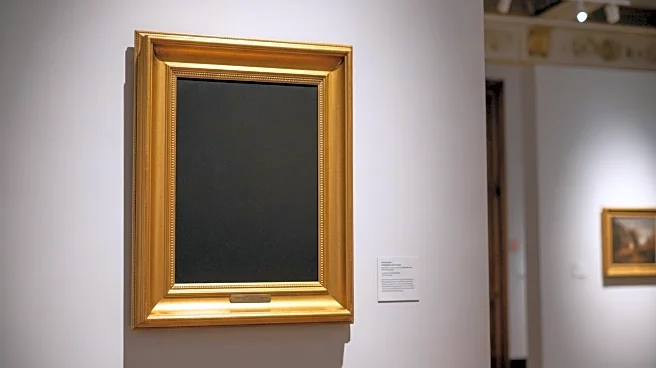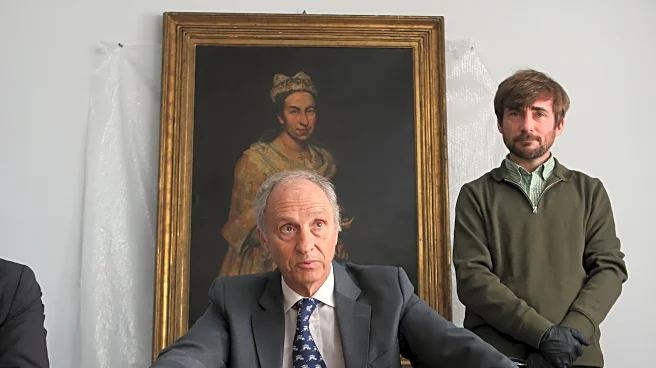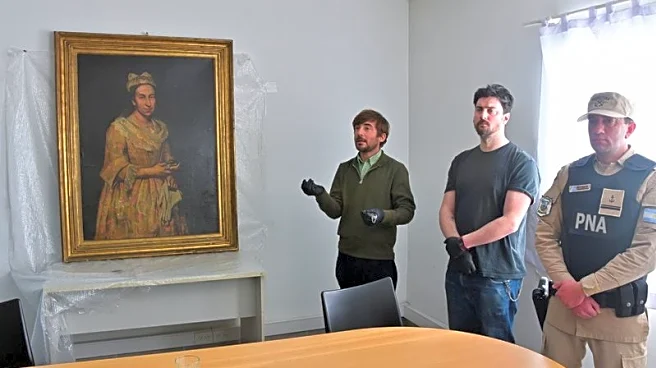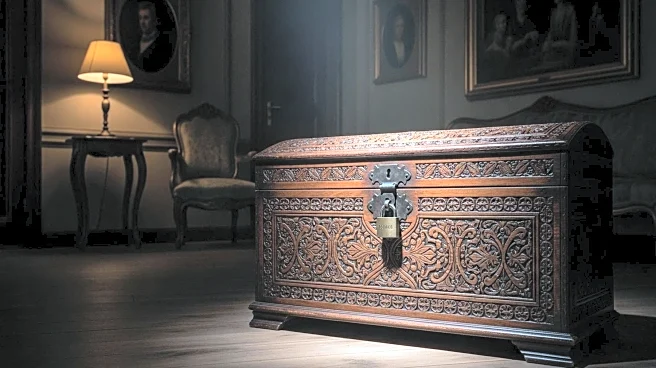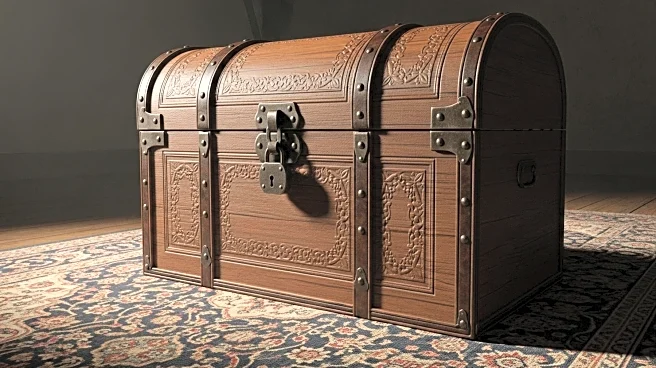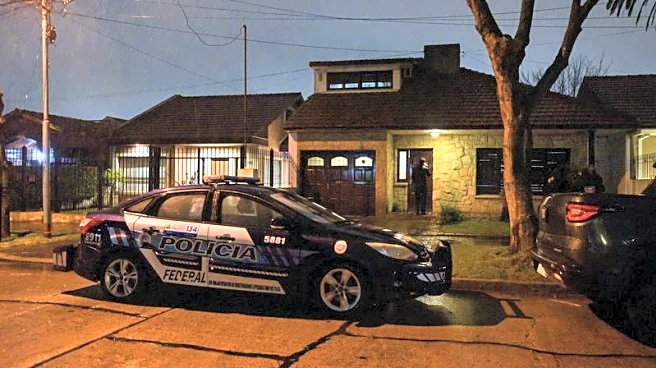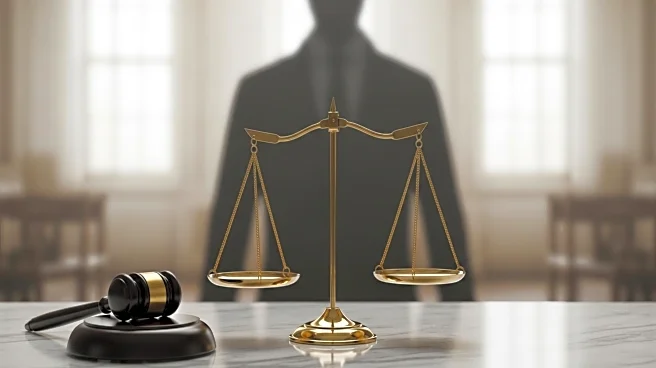What's Happening?
Argentine authorities have reportedly recovered a painting looted by the Nazis, which was discovered in a real estate listing for a home in Mar del Plata. The painting, a portrait by Giuseppe Ghislandi, was identified after a Dutch investigation highlighted its presence in the home of Patricia Kadgien, the daughter of a Nazi official. Following the investigation, Kadgien and her husband were placed under house arrest, accused of obstructing the investigation. However, Kadgien has since turned over the painting to the Civil Court, claiming she inherited it. The artwork, once owned by Jewish dealer Jacques Goudstikker, is part of a registry of lost art and was considered missing for decades.
Why It's Important?
The recovery of the painting is significant as it represents a step towards rectifying historical injustices related to Nazi-looted art. The painting's return could set a precedent for similar cases, encouraging the restitution of stolen artworks to rightful owners or their descendants. This event highlights ongoing efforts to address the cultural and historical losses suffered during World War II. The case also underscores the complexities involved in art restitution, where legal, ethical, and historical claims intersect. For the art world, this recovery may prompt further investigations into other missing works, potentially leading to more discoveries and restitutions.
What's Next?
The next steps involve legal proceedings to determine the rightful ownership of the painting. The Civil Court will likely assess Kadgien's claim of inheritance against historical records of the painting's provenance. This case may also influence international policies on art restitution, prompting other countries to re-evaluate their collections for looted art. Additionally, the outcome could encourage more individuals and institutions to come forward with information about other potentially looted artworks, furthering the cause of historical justice.
Beyond the Headlines
This development raises broader questions about the ethical responsibilities of art collectors and institutions in verifying the provenance of artworks. It also highlights the ongoing impact of World War II on cultural heritage and the importance of international cooperation in addressing these issues. The case may lead to increased scrutiny of private collections and auctions, ensuring that looted art is not inadvertently traded or displayed.
